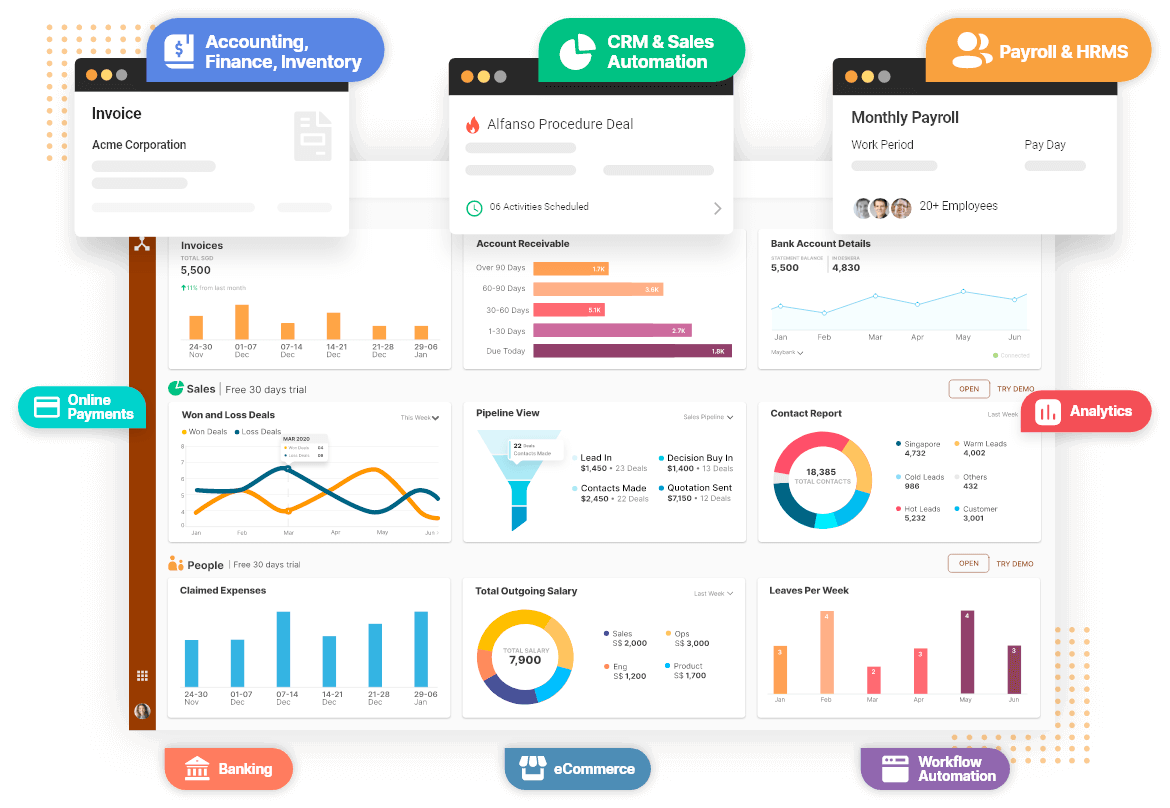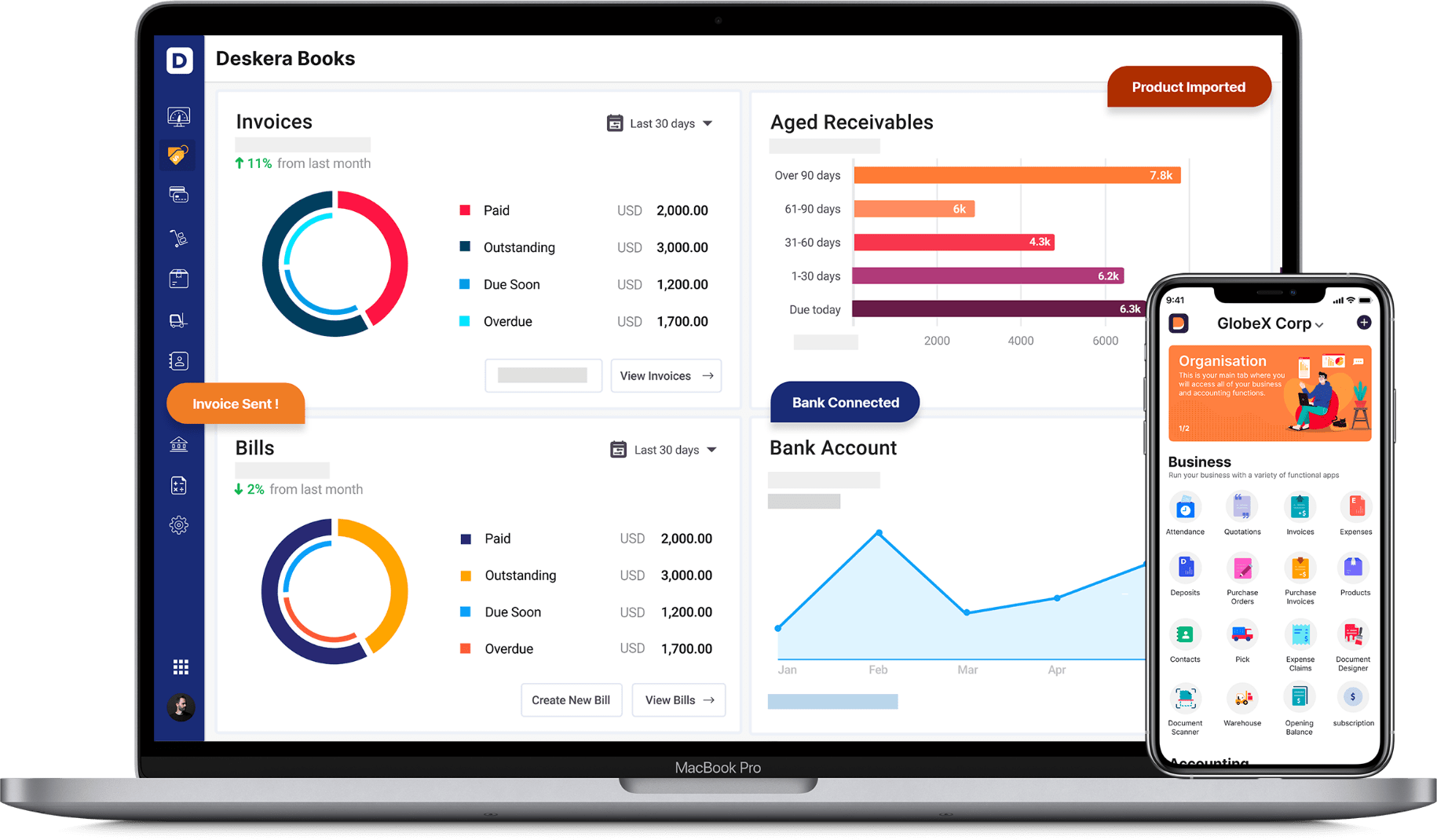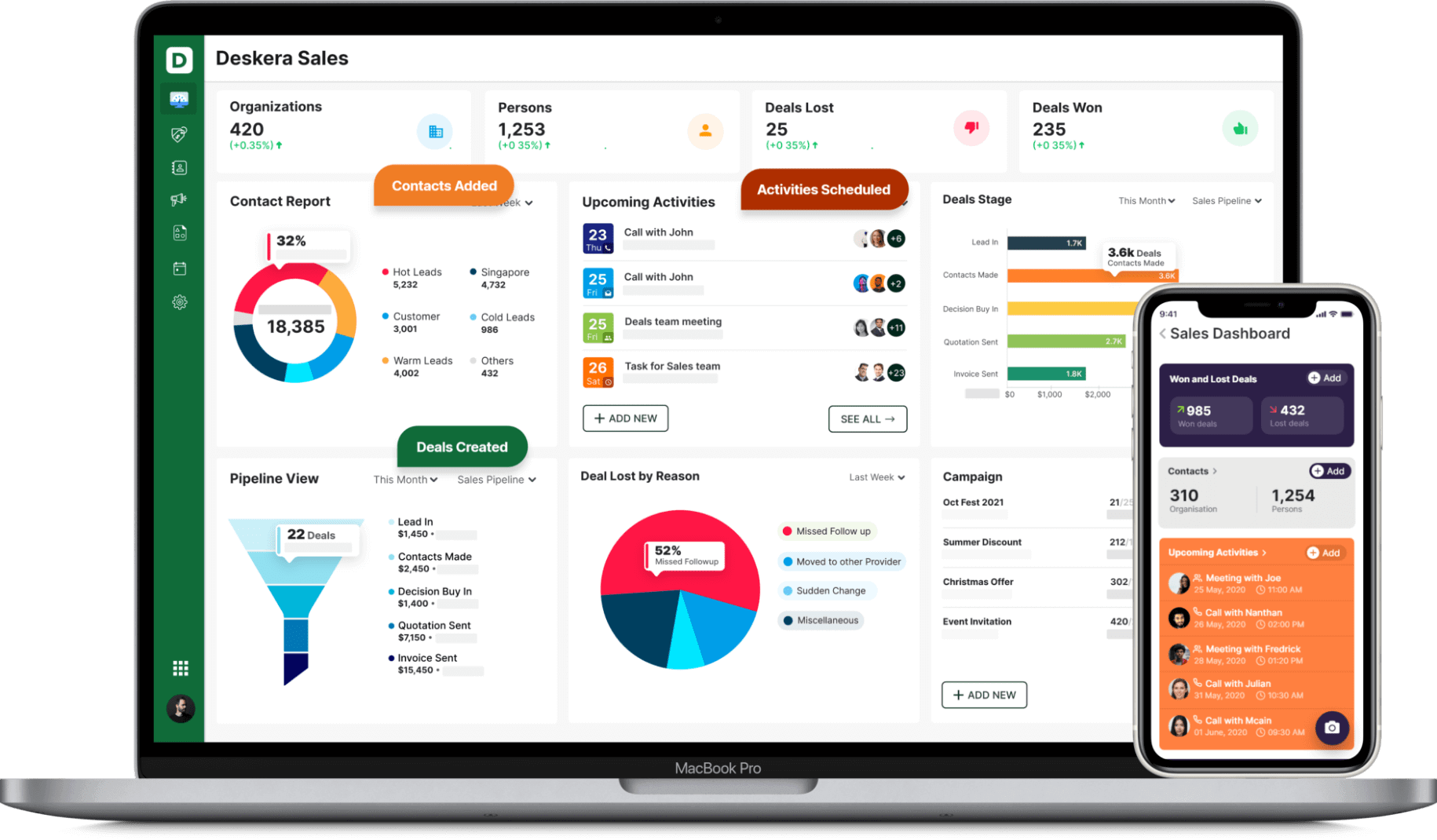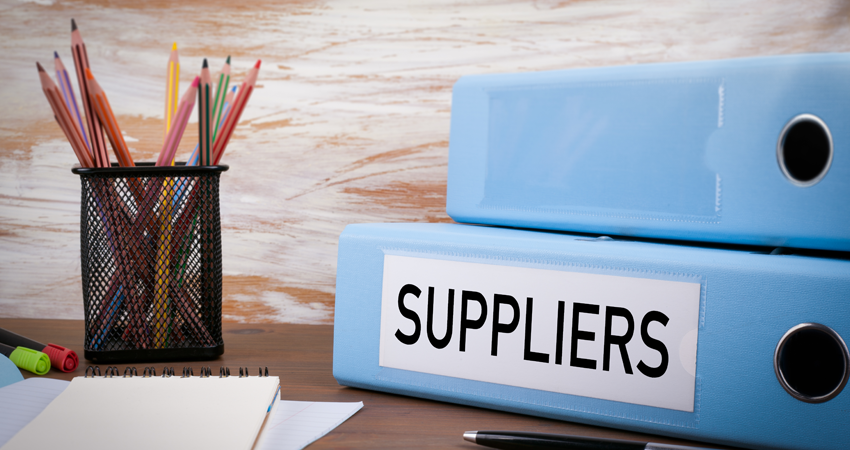We all know about the behind-the-process in sales, but have you ever thought to check up on the person who has a vital role in making this behind-the-process into a successful sale?

This person's name is Vendor. A vendor completes the sale and helps to build a long-term relationship with the business.
A vendor can be anyone. From a tomato seller to a car seller, every Vendor manages up to their scale. Though this term seems to be a six-letter word, the impact is enormous.
So, in this article, we will discuss vendors and their relevant aspects in detail. This concept includes the following:
- What is a vendor in the business
- The Importance of a Vendor in the Product Life Cycle
- Examples of the Role of a Vendor
- What Is Vendor Relationship Management?
- What is the process of Vendor Relationship Management
- What Are the Benefits of Vendor Relationship Management?
- Vendor Relationship Management Best Practices
- Difference Between a Vendor vs. Distributor?
- Supplier vs. Vendor: A Brief Breakdown
- Examples and Types of Vendors
- How Deskera can help Vendors
- Key Takeaways
What is a Vendor in Business?
A vendor can be described as a person, company, or group that distributes goods and services to businesses, companies, and ultimate customers. Vendors are a part of the economic production involved in the sale of the ultimate product. They constantly work with their delivery system to reach the end-user.
Usually, vendors take purchase orders on a contractual basis and are managed by a compliance checklist, quality edits, and tools.
To add more, vendors can be of many types that include B2B, B2C, and B2G. Some vendors may deal in proper products and inventories, while some may delay in services.
The Importance of a Vendor in the Product Life Cycle
Just like suppliers, vendors are also a critical part of the product life cycle. They drive new growth and build horizons to achieve profit and development, and help your sales campaign be a successful run.
Every organization should nurture its vendors in the same way they manage their clients and customers.
The importance of vendors in the product life cycle is clear from the following points:

1. Cost Management
You possess good communication and relation with your vendors by building trust and ensuring timely payments and regular orders. With this, you can get a chance to lead the orders in bulk guaranteeing the benefits of sales in terms of heavy discounts and special offers for your company.
With this, you will be able to manage the cost, inventories, and cash flow of the business
2. Customization Benefits
As a vendor is directly and indirectly associated with the market covering the demography and nature, he can suggest you offer something unique based on demand and preference. He can provide you insights that you can add in making your product different and unique that can help you to stand one level up against your competitors.
3. Timely Deliveries
A business aims to build customer satisfaction and vendors always help you to make your customers satisfied by offering timely delivery of goods in the right place at the right time. So, if you have such vendors, they will always prioritize your work and deliver goods ahead of time to maintain your brand and reputation.
4. Customer Satisfaction
The previous point follows this importance that through timely deliveries, customer satisfaction is possible. Vendors understand the importance and go way beyond their means to establish the brand loyalty and trust that customers hold concerning the brand.
5. Services Support
As a vendor, their primary role is distribution, but many vendors do provide extra support to their clients. Services can be in the form of perks and benefits like prompt response during shipment and procurement, compensations in uncertainties, or insurance services.
Remember,
"The primary role of a vendor can be to make money. But if taken utmost care, their role changes to make relations, rest money follows"
Examples of Role of a Vendor
The role of a vendor can't be limited to only one role as a distributor. Once you dive in, you will get to know a list of critical roles they fulfill during the distribution sTheir role can be described by the following:
- Receiving and maintaining the orders
- Checking the inventory and ensuring stock management
- Ensuring proper knowledge of goods and services
- Explaining about the product to customers and educating them to maximize the use
- Providing money management in terms of collection
- Maintaining records related to sales in terms of quantity and duration
- Negotiating the prices concerning demand and situation
- Managing a group of vendors involved with you
- Keeping sure that products are safe without any damages
- Having better communication skills and maintaining decent behavior with customers.
Hence, vendors can be best described as
"Ten roles, One Solution."
What is Vendor Relationship Management?
Vendor Relationship Management can be termed a system purposely built to manage and maintain the vendors in simple language. Just like Supplier Relation Management is related to managing suppliers, in the same way, VRM is supposed to manage the relationships and activities with the vendors.
We know that today's world is already connected through the internet and software. So with the help of VRM tools, businesses and vendors can establish a healthy relationship with each other, where both the parties benefit mutually in terms of revenue, growth, and success that ultimately creates a long-standing impact in the future.
So to achieve this, Vendor Relationship Management is the key.
What is the Process of Vendor Relationship Management?
The vendor Relationship Management process proceeds in a chronological order formed through a step-by-step process.
These are purposely driven steps needed for a practical vendor relation and help organize and solidify the relations.
The process of Vendor Relationship Management covers the following six stages:

1. Establishment of Business Goals
The establishment of Business Goals is the primary stage in which the businesses set their business goals, including sales objectives and targets. Based on this, the company gets to know what needs to be done and proceed accordingly.
Like, the business can target to make $10000 sales.
2. Vendor selection
Based on business goals, vendors have selected that suit their budget and expectations. Through the proper analysis from the list of vendors, a business can inspect about their values, experience, records to satisfy the goals and KPIs.
Continuing with the same example, if the business aims to target $10000 sales, then it should screen and scale those vendors who have already dealt with big projects. It will help you to understand their working style and their ability to achieve targets.
3. Risk Assessment
Risk Assessment is the third and crucial step wherein the business should exercise due diligence to ensure the risks associated with the Vendor. The assessment should be transparent concerning money spent; deliveries took as well as internal threats.
4. Negotiation and Contracts
After all the above three steps are conducted well, it's time to make the final call with the Vendor. Here, all the negotiations and talks take place, and after agreeing to the terms and conditions from both parties, contracts are built to enhance the relation and working process.
Through documentation of services, monitoring of activities becomes easy.
5. Vendor Onboarding
This step is the ultimate final, binding process between the Vendor and the business. It is a sign of the selection of a vendor and also to kickstart the activities from the suitable date
6. Monitoring Activities
This step is just an extension to the final step wherein the business and Vendor collect necessary data for records, inspection, and evaluate risk mitigations to ensure diligence.
That was all for the process.
From setting goals to vendor onboarding, each step is significant in the Vendor Management Process.
What are the benefits of Vendor Relationship Management?
So far, it is much clear that Vendor Relationship Management deepens the prospect-vendor relationship. Through an effective management process, both business and vendors can get quality increments, achieved targets, and scope of innovations for the future.
However, this is just one benefit. There is a list of benefits of Vendor Relationship Management which are discussed below:
- Performance measurement
- Build Trust and Loyalty
- Equal Share of Risks
- All data at one place
- Builds scope of Improvement and Strategies
1. Performance measurement
Organizations with good vendor management techniques can measure and evaluate the Vendor's performance concerning the deliveries, scorecards, ratings, and reviews. The vendors hold responsibility and are held accountable for their performance and enable you to keep track regularly
2. Builds Trust and Loyalty
Above everything, it's trust and loyalty that are built into the VRM process. Businesses maintain a happy relationship with vendors by ensuring payments on time and investing in them. This process will automatically create an emotional connection that enables the Vendor to go beyond their means for your service.
3. Equal Share of Risks
There is a lot of uncertainty involved in the supply chain and vendor management. Both businesses, as well as vendors, are at risk altogether. Through VRM, the associated risks can be evaluated well, and through vendor contracts, they can mutually take the burden of risk rather than handling individually.
4. All data at one place
Having separate files for separate data can be too monotonous to handle for any business organization. With the help of VRM, you can find all the data in one place for all the vendors. By data means all access to POs, PR's, vendor payment information, feedbacks all of them. Besides all this, be it small scale or large scale businesses, there is some confidential data about crucial deals, licensing, mergers and acquisitions, asset sales etc. For storing and secure file sharing options of such important corporate documentation and data, you can also use due diligence data rooms.
5. Build scope of Improvement and Strategies
With evaluation, comes deviation and with deviation comes improvement. Through VRM, businesses and vendors can build corrective actions and steps to overcome the deviations and prepare future strategies.
The VRM, no doubt, if implemented well, can give you an optimal mixture of everything that a vendor and business eye for.
What other benefits do you need?
Vendor Relationship Management Best Practices
Laying out the expectations, ensuring standards, checking them frequently, and maintaining them are crucial elements of Vendor Relationship Management. For effective administration of all, you need best practices to assist you at every step and guide you for all the actions.
With that in mind, let's dive into five vendor management practices of all times.

1. Picking up and evaluating the right set of vendors
The process of selecting the right set of vendors is crucial for the business. There should be a proper system to determine whom to work with by narrowing the list based on fit, prices, and risk associated with it.
Through a proper selection process, you will connect with the right set of vendors for your projects, and if all goes right, you can permanently associate with them.
2. Streamlining procurement process and agreement
Streamlining the procurement process means centralizing the Vendor's data based on locations. Your business should have the ability to approve or disapprove the procurement process laid by the Vendor through a dashboard.
The tools should be capable enough to identify money spent, forecast, and predictive analysis.
Moreover, through written agreement, the process becomes smooth and easy to communicate based on both parties' deliverables and responsibilities.
3. Monitoring and Controlling Costs
Once the Vendor is in contract, it is essential to keep track of costs as soon you pay the vendors. You need to evaluate
- How much money is being spent on vendors
- Frequency of payments
Overall, all these data must be equally accessible to both parties for review and analysis. This will ensure transparency in analyzing the Rate of Return concerning the Rate of Investment spent on each Vendor. Also, if there is a plus or minus, it can be controlled accordingly.
4. Building Relations with Vendors
Building mutual relations with vendors takes time because it is two-sided. Vendors need trust for payments while the business needs trust for deliveries. With the help of communication and command, everything can be achieved well. You can make them a part of the process by keeping it transparent and involving the vendors in your practice and approaches.
5. Handling decisions on a practical note
In the process of planning, there can be chances of less or no execution of the strategies. Due to the dynamic and changing environment, there are also chances of unpredictable business runover. So, it is essential to be ready for all the possibilities and scenarios in the future.
One should be ready for all the backups by intensely monitoring and evaluating aspects related to vendor management. This will help you to make decisions in the right way rather than doing anything that may cost you in the future.
Remember,
"Quality follows practices.
If you follow, you know the drill well."
What is the Difference Between a Vendor Vs. Distributor
Vendor management has many terms used interchangeably, but the deeper you go, you realize how these terms differ from each other. One such set of words is Vendor and Distributor, which are used the same way in conversations.
But it is crucial to note that their roles are entirely different from each other.
Like a Vendor is responsible to purchases goods and deliver to customers
Whereas, A distributor acts as an intermediary between the manufacturer and the Vendor.
A vendor's ultimate goal is to reach customers, whereas distributors' goal is to solve various purposes.
Well, then let's take a look at the key differences between these terms through the following table:
You can yourself note the difference and check accordingly.
Supplier Vs Vendor- A brief breakdown
Here we go again!
Suppliers and Vendors are the most common and interchangeable words used in supply chain management. They might sound similar, but specific attributes make them different from each other.
To brief you about both the terms,
Suppliers distribute goods and services, whereas the vendors don't distribute goods; they are responsible for building B2B and B2C relations.
Also, vendors provide ready-made items for shipment, whereas suppliers deal with raw materials that further convert into finished goods.
To understand the concept better, let's take a look at their distinctive features and scope of work through the following table:
Examples and Types of Vendors
As mentioned in the introduction, vendors can be differentiated based on purpose and business. Vendors are also distinguished based on the type and the work they do.
For a better understanding of the vendors, let's look over to their types and examples:
- B2B (Business to Business)
- B2G (Business to Government)
- B2C (Business to Consumer)
1. B2B ( Business to Business)
These types of vendors deal with goods that sell primarily to other vendors.
For example, for automobile company Hyundai, vendors deal in parts like batteries, tires, electronics, systems, door locks, and other components.
2. B2G ( Business to Government)
These types of vendors sell directly to the government. These vendors are licensed and have special permission from the government to sell products on a contractual basis.
For example, products related to the defense industry are sold by vendors.
Adding to it, a B2G vendor can act as a government consultant who holds good experience in the private sector and wants to use it for serving in the public sector.
3. B2C ( Business to Customer)
These types of vendors sell directly to consumers. The products can be components or final products.
For example, the supermarket brand Big Bazaar has a set of vendors who sell different products for food, clothing, footwear, and crockery ready for the customers.
In the world of the internet, many vendors have registered online and sold goods through e-commerce platforms.
How can Deskera help Vendors?
As a business owner, you can invest in Vendor Relationship Management tools by Deskera to help you manage and track your business cycle. A successful business needs an efficient operational cycle process that meets its specific needs. You can apply VRM tools to boost your online business effectively. Deskera is an all-in-one software that can help you keep track of dropshipping and help you digitalize your business with the right tactics and management.

It facilitates syncing of data across multiple devices and users hence reducing the chances of making mistakes. This also boosts the productivity of your business and workforce while making them more efficient.
Using cloud computing systems for businesses also minimizes server maintenance, up-gradation expenses, and software licensing to mention a few. In contrast, using a cloud system like Deskera will not only reduce your cost but also make the monthly subscription expense of Deskera predictable and thereby manageable.
In addition to this, Deskera Books will make accounting faster, more efficient, and real-time. This will become the basis for your sales strategy as well as business decisions. Deskera books will also ensure that your business follows the RITE framework of accounting, which will save it money. You can have access to Deskera's ready-made Profit and Loss Statement, Balance Sheet, and other financial reports instantly.

Deskera can also help with your inventory management, customer relationship management, HR, attendance, and payroll management software.
Deskera People and CRM will handle the customers, their experiences, customer after-sales services, and their trends with your business. If any part of business functioning needs a change, it is here that it will be presented.
Through Deskera CRM, the sales pipeline can also be designed, customized, and monitored. It will again give real-time feedback for the functions carried out and those forgotten. Email campaigns can also be automated through deskera.

Invoice generation, invoice reminders, and integration of tasks, inventory, tax calculations, and payments due and receivable can also be brought together in one place.
Deskera is hence your go-to solution for all your business financial reports and more. It will become your guide, mentor, and assistant to help you avoid mistakes and save you money.
Key Takeaways
In this article, we talked about every aspect related to vendors, the concept of Vendor Relationship Management, importance, and examples.
The briefing is as follows:
- A vendor can be described as a person, company, or group that distributes goods and services to businesses, companies, and ultimate customers
- Importance of vendors in the product life cycle in terms of Cost Management, Customization Benefit, Timely Deliveries, Customer satisfaction, and Services Support
- List of role of vendors in the business cycle
- Process of Vendor Relationship Management involves six stages that are establishment of goals, vendor selection, risk assessment, negotiations and contracts, vendor onboarding and monitoring activities
- List of benefits offered by Vendor Relationship Management like Performance measurement,Trust and Loyalty, Equal Share of Risks, All data at one place and scope of Improvement and Strategies
- Best practices of VRM includes picking and evaluation of vendors, streamlining procurement process and agreement, Monitoring and Controlling Costs, relations and handling decisions practically
- Key differences between vendor and distributor
- Key differences between supplier and vendor
- Example and types of vendors include B2B, B2C and B2G
- How Deskera can help vendors
Related Links












